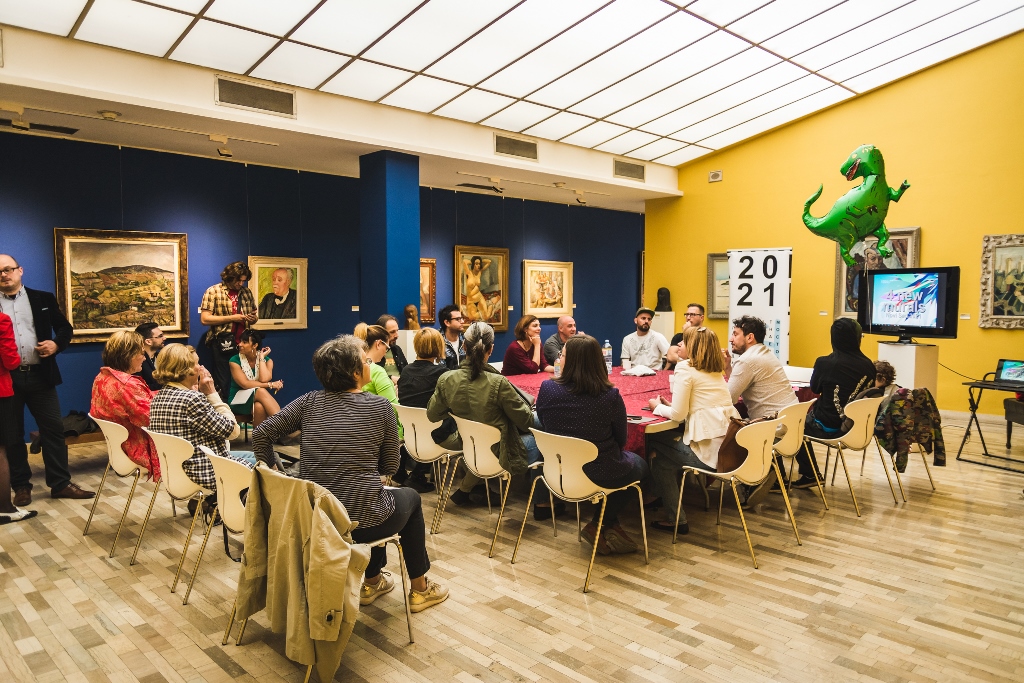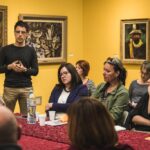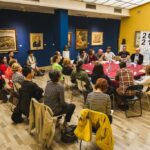In order to establish transparent model for realisation of the project for painting public wall surfaces, the ‘Novi Sad 2021’ Foundation organised the first discussion entitled ‘NOVI SAD -THE CITY OF MURALS’ on Wednesday, 3 May. The Foundation invited artists and associations that work in the field of urban culture, as well as city institutions that are in charge of public spaces, who commenced a long-term process of shaping a model that will be functional and applicable in the following years.
Nemanja Milenković, CEO of the ‘Novi Sad 2021’ Foundation, stressed that the muralisation process is not new, it is has been an ongoing process worldwide for decades, especially in European Capitals of Culture to a smaller or greater extent. What is new are ‘bridges’ we want to build.
– For Novi Sad, these ‘bridges’ in the context of muralisation are the two things. One is methodology, i.e. the way in which we want to see muralisation taking shape. This includes three key categories that are important for every ECoC. These are participation and European dimension that will jointly lead to a democratic process necessary for systematic approach to urban culture in which all stakeholders take part – citizens, local and foreign artists, associations, and institutions. The second novelty are the works that will be painted. What is important is that these works are the result of joint, long-term, continuous and systematic work, and not an ad hoc solution or action/reaction to certain events in the city – Mr Milenković said.
He once again stressed that the way in which we want to find solutions is new, and the result of these solutions will always be original, because it will be created by artists. This new way provides that experts determine locations suitable for murals, which work could be realised at which location, as well as the manner to include citizens in decision-making process.
– There are certain rules in place that have not been applied here, and that is why we want to start this process by organising everything systematically, which is a precondition of continuous progress in any field, especially in culture – Mr Milenković said.
Christian Potiron, the international advisor of the ‘Novi Sad 2021’ Foundation, who directly participated in implementation of European capital of culture projects in Košice, Plzeň and Bucharest, believes that the ‘problem of murals in city centres’ is not a problem unique to Novi Sad.
– We had the same problem in Košice, where we had conflict between artistic freedom of speech and freedom of citizens of Košice to choose what they want to see on city walls – Mr Potiron said.
He stressed that murals provide a unique opportunity for development, i.e. education of audience, because large number of people comes into direct contact with art on public surfaces, which are accessible to all. Therefore murals are there to both inform and educate about art.
According to him, the goal of the meeting was not for the Foundation to offer support to individual artists or projects, but to create a platform that will gather artists and enable them a sustainable work and financing, even after the year of the European Capital of Culture project.
– The Foundation has suggested a pilot project that will include one or two events. The goal is to connect artists, city administration, public institutions and the NGO sector. Košice is a good example, where artists organised an independent vestival of visual art that was supported by their ECoC team. This festival exists even today, and it resulted in around 30 murals that are tourist attraction in Košice – Mr Potiron said.
At the end, Mr Potiron stressed that the European dimension is the most important aspect, in sense of connecting local artists will their colleagues from abroad, and creating wider platform and open gallery of visual art and murals.
During the discussion, the artists pointed out to one of the main problems – complicated and unclear procedure for obtaining the permit to paint a mural. Moreover, two models for ‘muralisation of Novi Sad’ were proposed: representatives of the cultural institutions suggested that murals should showcase works exhibited in museums of Novi Sad, while artists believed that murals should follow urban and contemporary trends.
By organising this discussion, the ‘Novi Sad 2021’ Foundation was once again a ‘bridge’ that connected, for the first time, artists, associations, interested citizens on one side, and representatives of the local institutions such as PE ‘Urbanizam’ and Institute for Protection of Cultural Monumnets of Novi Sad, on the other.







